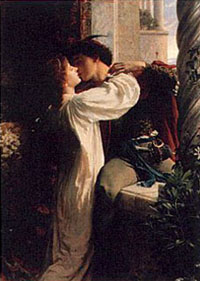
Peaceful societies are contemporary groups of people who effectively foster interpersonal harmony and who rarely permit violence or warfare to interfere with their lives. This website serves to introduce these societies to students, peace activists, scholars and citizens who are interested in the conditions that promote peacefulness. It includes information on the beliefs of these peoples, the ways they maintain their nonviolence, and the factors that challenge their lifestyles.
LISTS: A list of peaceful societies is never completely finished or accurate. However, social scientists have convincingly described at least 25 societies around the world in which there is very little internal violence or external warfare. Generalizations are difficult to make accurately, except that most of the time these peaceful societies successfully promote harmony, gentleness, and kindness toward others as much as they devalue conflict, aggressiveness, and violence.
LISTS: A list of peaceful societies is never completely finished or accurate. However, social scientists have convincingly described at least 25 societies around the world in which there is very little internal violence or external warfare. Generalizations are difficult to make accurately, except that most of the time these peaceful societies successfully promote harmony, gentleness, and kindness toward others as much as they devalue conflict, aggressiveness, and violence.
DISCLAIMER: While scholars have clearly identified a small number of societies in which people rarely act aggressively, it must be emphasized that no stamp of approval is intended for the societies included in this website. None of them are utopias. They share many problems with the rest of humanity. That said, however, most of the time they interact in a highly pro-social manner and they successfully avoid both violence within their own societies and warfare with other peoples.
OTHER "PEACEFUL" SOCIETIES: Popular writers and casual observers have also described many other societies as “peaceful,” but often in a more general or romantic sense. This website focuses, instead, on societies where there is significant scholarly literature to support the claims of peacefulness, and where the evidence provided by those scholars appears to be quite convincing.
COMPARISONS: Part of the fascination of this scholarly literature is the way readers can compare the extent of peacefulness and violence in these societies. Their differing ways of developing social, psychological, ethical and religious structures that foster peacefulness should inspire—and challenge—anyone interested in the processes of peace building. This literature suggests several questions:
Why are some societies highly opposed to both aggressive behavior within the community and warfare with external enemies, while most other peoples tolerate or even encourage such violence?
How are these peaceful societies able to maintain their pro-social values and their nonviolence even when challenged by aggressive outside forces?
How do peaceful societies raise their children to support harmonious social interactions, to devalue violence, and to transmit firm commitments to nonviolence to following generations?
What sorts of psychological strategies do they employ to reinforce their values and beliefs in peacefulness?
How do the religions, systems of belief, and worldviews of the peaceful societies foster their nonviolence?
APPROACHES TO PEACEFULNESS: Most of the nonviolent peoples have a wide range of strategies for promoting interpersonal harmony, building mutual respect, and fostering toleration for individual differences. Many of them are masters at devaluing conflicts, minimizing and resolving them when they do occur, and preventing them from developing into violence. Many of these peaceful societies also devalue competition, self-focus, and other ego-centered social behaviors that they feel might lead to violence.
LITERATURE: While the literature about these societies is small in contrast to the vast number of works about violence and war, there are some notable, highly readable books about peaceful societies and some useful websites that describe a few of them. Most of the best literature, however, is available in books, journal articles, and essays contained in published volumes. A small number of the best journal articles and essays from books are included in the Archive of Articles on Peaceful Societies of this website. Three different encyclopedia articles describe peaceful societies and the literature about them (Dentan 2002; Fry 1999; Sponsel 1996).
ADDITIONS: Additions to the website, as well as news about the peaceful societies, are noted on the News and Reviews page.
Photo: Seven year old Zapotec boy eating a tortilla in the fields of Oaxaca, Mexico, near the village of La Paz. D. P. Fry photo collection.
OTHER "PEACEFUL" SOCIETIES: Popular writers and casual observers have also described many other societies as “peaceful,” but often in a more general or romantic sense. This website focuses, instead, on societies where there is significant scholarly literature to support the claims of peacefulness, and where the evidence provided by those scholars appears to be quite convincing.
COMPARISONS: Part of the fascination of this scholarly literature is the way readers can compare the extent of peacefulness and violence in these societies. Their differing ways of developing social, psychological, ethical and religious structures that foster peacefulness should inspire—and challenge—anyone interested in the processes of peace building. This literature suggests several questions:
Why are some societies highly opposed to both aggressive behavior within the community and warfare with external enemies, while most other peoples tolerate or even encourage such violence?
How are these peaceful societies able to maintain their pro-social values and their nonviolence even when challenged by aggressive outside forces?
How do peaceful societies raise their children to support harmonious social interactions, to devalue violence, and to transmit firm commitments to nonviolence to following generations?
What sorts of psychological strategies do they employ to reinforce their values and beliefs in peacefulness?
How do the religions, systems of belief, and worldviews of the peaceful societies foster their nonviolence?
APPROACHES TO PEACEFULNESS: Most of the nonviolent peoples have a wide range of strategies for promoting interpersonal harmony, building mutual respect, and fostering toleration for individual differences. Many of them are masters at devaluing conflicts, minimizing and resolving them when they do occur, and preventing them from developing into violence. Many of these peaceful societies also devalue competition, self-focus, and other ego-centered social behaviors that they feel might lead to violence.
LITERATURE: While the literature about these societies is small in contrast to the vast number of works about violence and war, there are some notable, highly readable books about peaceful societies and some useful websites that describe a few of them. Most of the best literature, however, is available in books, journal articles, and essays contained in published volumes. A small number of the best journal articles and essays from books are included in the Archive of Articles on Peaceful Societies of this website. Three different encyclopedia articles describe peaceful societies and the literature about them (Dentan 2002; Fry 1999; Sponsel 1996).
ADDITIONS: Additions to the website, as well as news about the peaceful societies, are noted on the News and Reviews page.
Photo: Seven year old Zapotec boy eating a tortilla in the fields of Oaxaca, Mexico, near the village of La Paz. D. P. Fry photo collection.
http://http://www.peacefulsocieties.org/

